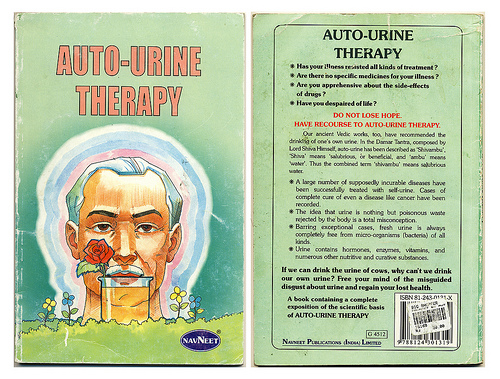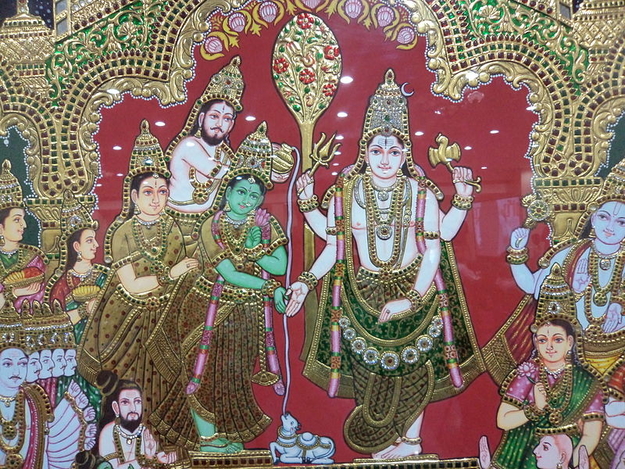Probably the major expert of (auto)-urotherapy in the Netherlands, Coen van der Kroon encountered this practice by chance while travelling through India and found out it was a miracle cure for an unexpected accident. Since then, he has gained a profound knowledge about the so-called water of life and he is willing to share his expertise, provided his audiences are truly interested in the subject and treat it seriously. Indeed, urotherapy challenges the existing medical paradigm and it is often difficult to avoid criticisms, let alone ironical remarks when speaking about it.
Luckily, Mr. van der Kroon provided us with some introductory material, which we would like to pass over to you before addressing urine therapy, its effectivity, and its (scientific) acceptability in one of our Pis' Talks.
This alternative medicine practice has a relation with ayurvedic notions that take the metabolic system into account. Indeed, urine is supposed to be sterile and to contain several important components that help different bodily functions. Among them there are:
- Ojas, which is an essential component for the immune system. By drinking urine, Ojas can be reintroduced in the body. The latter is strengthened as a result.
- Dhatu particles. These are parts of bodily tissues, which means that also enzymes are present in there. Consequently, urine can provide easy nourishment to the tissues when re-ingested. Especially in malfunctioning metabolic systems the addition of enzymes can turn out to be very useful to establish a new balance.
- predigested antibodies. These would help the body to acquire immunity through repeated exposure in small doses.
- cancer-fighting peptides (such as the 3-methyl-glyoxal and antineoplaston) and enzymes that can dissolve blood clots (namely urokinase).
Urotherapy would thus enable the re-absorption of hormones and nutrients. Some theories claim that the body saves energy in this way. Such energy would be then redirected and used for healing processes, primarily physical ones. However, re-balancing hormones and enzymes would also positively affect one's mental health. Furthermore, urine could not only be ingested, but also used for massages against muscle pain and skin disorders and for gargles against ailments in the mouth. All these possible applications of urine would make the golden liquid a Mala, that is a useful waste product. Tellingly, urine therapy is known as amaroli in Sanskrit. The word comes from amara, which means “immortal”.
Immortal just like a divinity such as Shiva. Indeed, according to the Indian tradition, Shiva remained handsome, youthful and vigorous although the time passed by and even though he was used to exercise austere spiritual practices. His wife Parvati asked him how that was possible, but he answered it was a secret. Eager to know his trick, she resorted to all possible strategies and finally decided to refuse to have any intercourses with her husband. Given that sex between the two was the conditio sine qua non for the existence of the whole universe, Shiva capitulated in order to avoid the annihilation of all things and revealed that he secretly practiced amaroli and this boosted his health and bodily appearance. Shivambu (urine) was thus equal to a divine nectar.
In the material he shared with us, Coen van der Kroon mentions also some possible explanations for the benefits of urine therapy, but warns that they still need to be scientifically proved. For example, the salty content of urine might help remove mucus deposits in the body and encourage healthy bowel activity; re-absorbed urea might be transformed into glutamine which contributes to the construction and maintenance of specific tissues, strengthens the immune system, and is supposed to have anti-cancer properties; urine might also have an antiseptic effect due to its chemical composition with ammonia, salt, and urea; it might have an immunological effect too: being toxic, it would improve the defence system by making it deal with an imbalanced, but not dangerous presence of antigens; finally (and paradoxically), urine might have a diuretic effect: drinking it would stimulate the production of more urine, which would detoxify the body more and more.
Van der Kroon has put forward a personal theory too, namely that urine would contain a holographic picture of the body's condition. By drinking one's own urine, energy would be provided to the body since pee would contain the information needed to restore any missing balance. According to this perspective, the body would be also able to transmute some substances in the body into other, more helpful ones.
Ultimately, urine therapy, being easily accessible and cheap, could offer a bottom-up, community-based alternative in situations where health costs are too high or treatments are not available.
Some obstacles, though, have to be overcome: psychological rejection is one, scientific legitimacy is another. Chemical pollution of our bodily fluids further hinders the diffusion of the practice. More data and more experiences are necessary to prove the composition of urine, its sterility and its effectiveness. Since counter-indications and side-effects are possible, it is important to consult an expert before starting the practice and obtain precise indications about timing, quantities, diet, and health indicators.

